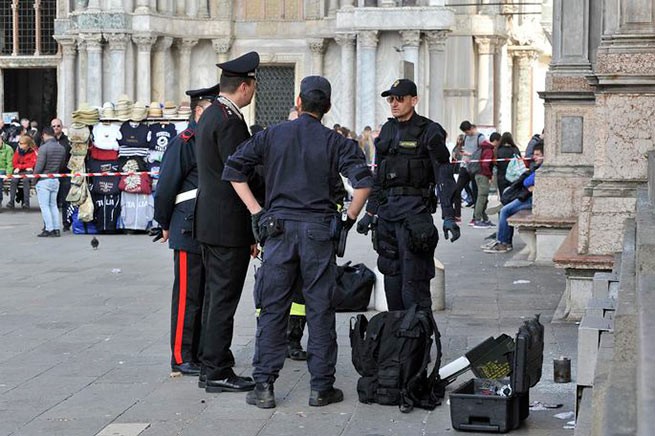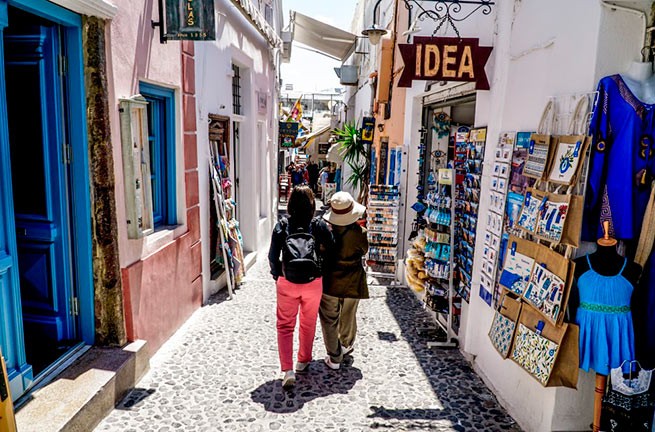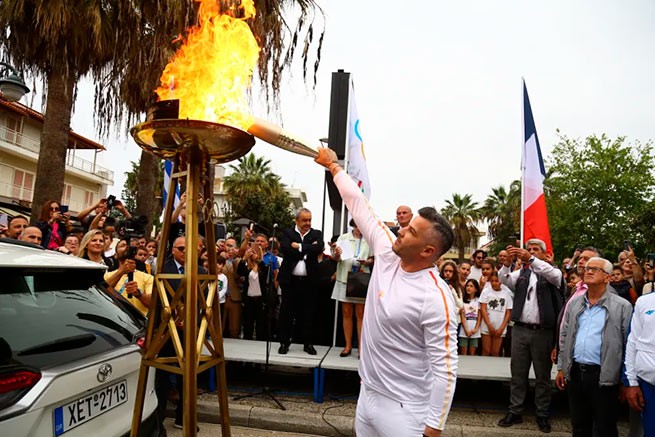An average standard Easter 2022 basket for two is estimated at 45.35 euros if you intend to buy food in large supermarket chains (not including lamb meat). The cost of the Easter treat this year is 9% more than in 2021 (€41.70).
This follows from the results of a survey of prices for organized food retailers (large supermarket chains) in Greece at Easter 2022 by the Consumer Products Research Institute (IELKA).
It is based on data collected by IELKA researchers from major supermarket chains and relates to Holy Week prices. The other part is taken from the e-katanalotis application.
Experts presented a list of the main products that traditionally make up the Greek Easter table:
6 eggs, chureki, vinegar, flour, mustard, feta cheese, yogurt, wine (μοσχοφίλερο), beer, potatoes, tomatoes, butter, salad greens (maruli), sheet dough (for pie), carbonated drinks such as Cola.
According to IELKA, there is a 9% increase in the food basket in 2022 compared to 2021, “based on inflation trends observed in recent months.”
At the same time, the average price range (the difference between the lower and the higher price of a standard basket) within the categories under consideration remains high, at 35%. This suggests that consumers still have options for both “economical” and “luxury” Easter meals, depending on which products they prefer (or are able to) choose: i.e. different varieties, quality, as well as those with or without their own brand, the use of pre-holiday offers from stores (promotions and discounts).
There is an intensity of offers and promotions from supermarket chains and supplier companies in the form of providing: additional discounts and quantities, gift certificates, discount coupons, etc., for almost all seasonal products. Which, according to experts, provides an additional benefit of about 13% of offers on average for consumers who use them.
Higher price increases are noted for salad greens, maruliincreased due to very unfavorable weather conditions, and flour, followed by butter, mustard and sheet ready-made pie dough (semi-finished product). Prices for yogurt, beer and soft drinks show declines.
How much will lamb cost?
For mutton, the final market picture has not yet been formed, but based on producer prices, it is assumed that the price of mutton will be raised during Holy Week.
According to market participants, prices are driven by a combination of factors. It is believed that the price of lamb in the stores of large supermarket chains is lower than that of competitors (for example, butchers, markets, etc.). The difference in prices is the result of the efficient operation of organized supermarket supply departments and long-term cooperation with organized large suppliers.
The reduction in the supply of food from the United Kingdom in the past two years (due to the exit from the European Union), has caused a strong “absorption” of products from the Greek market by Italy and Spain, countries that celebrate Easter this year a week earlier. That is, carcasses of lambs weighing 10-13 kg, which are mainly in demand among consumers, were partially sold out. And increased demand in Greece began to push prices up.
The crisis has changed the habits of the feast
With regard to the public survey conducted by IELKA with a sample of 1,000 consumers during the week of April 5-10, 2022 and regarding the consumption habits of the inhabitants of Greece (in particular, the Easter table), among other things, it turned out that a smaller number of citizens plan family feasts.
In the past, until 2020, 62%, or 2 out of 3 consumers, have participated in large family gatherings (more than 10 people). This percentage in 2020, at the height of the lockdown due to the covid pandemic, was only 3%, in 2022 it increased to 30, but never reached the “pre-coronavirus era”.
A similar pattern is seen for consumers who choose to travel to a village or an island, with a percentage of just 25% in 2022 compared to 58% in the past. This is due to financial problems and transportation costs.
And the percentage of consumers who will roast lamb and goat meat on a spit has decreased from 61% to 25%. The number of those who simply bake a piece of lamb in the oven increased from 39% to 52%.






More Stories
EU employment record: Greece "stuck" in a low position
“Bonus” of 300 euros for the long-term unemployed
Turkish tourists choose Samos for their holidays